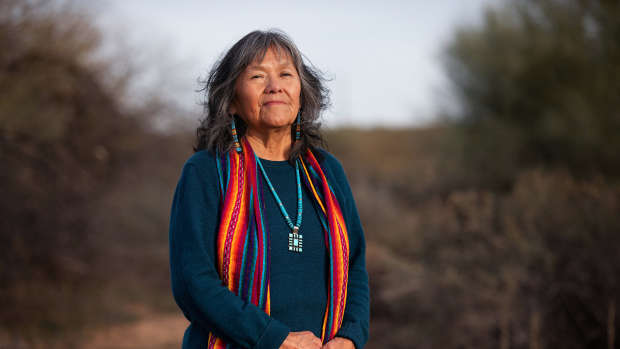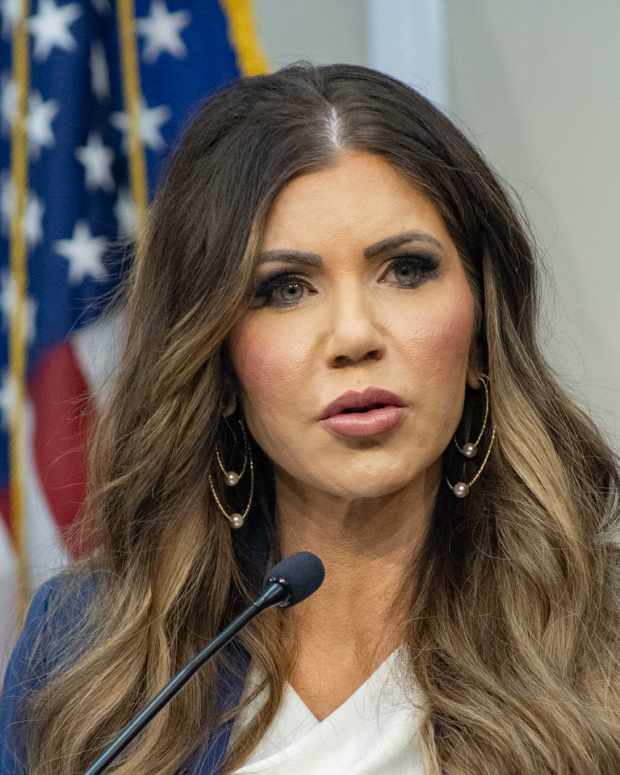
The Wrap: 140 tribal leaders testified in the Capitol
Greetings, relatives.
A lot of news out there. Thanks for stopping by ICT’s digital platform.
Each day we do our best to gather the latest news for you. Remember to scroll to the bottom to see what’s popping out to us on social media and what we’re reading.
Also, if you like our daily digest, sign up for The Weekly, our newsletter emailed to you on Thursdays. If you like what we do and want us to keep going, support and donate here.
Okay, here's what you need to know today:
WASHINGTON — Council member Jill Sherman-Warne, Hoopa Valley Tribe, flew across the entire country to testify before the Interior, Environment, and Related Agencies subcommittee under the House appropriations committee. She sat at a small conference table with members of the subcommittee in room 2008 at Rayburn House Office Building.
The room was packed with five rows of empty leather chairs. The audience was sparse on Tuesday, May 7, afternoon after a day of testimony.
Sherman-Warne was one of approximately 140 tribal leaders who gave public testimony to a House appropriations subcommittee about the needs of their community and what the funding priorities should be for Indian Country. Sherman-Warne and two other tribal leaders who testified talked about the needs for funding public safety and emergency services with an emphasis on wildfire firefighters.
She sat next to three others who are also from California tribes. Each one was given five minutes to give their testimony to two congressional members of the subcommittee.
“I think as Indian people, it's really hard for us to advocate for ourselves what the real need is, because we don't want to appear greedy,” Sherman-Warne told ICT. “So we don't actually ask for what we really need. We are just asking to meet the minimum needs, and we need to be like everybody else, and go for the maximum.”
Maine Rep. Chellie Pingree agreed with Sherman-Warne.
“So, often people are just here saying we could live with the bare minimum, but what we really need is 25 more officers, but could you please just give us two more,” Pingree gave as an example. “I hope sometime we’re not in the position to just be looking at the bare minimum.” READ MORE. — Pauly Denetclaw, ICT
SUPPORT INDIGENOUS JOURNALISM. CONTRIBUTE TODAY.
FASHION: Rock the mocs
Robert Mirabal of Taos pueblo had a high-profile booth and show at the Southwestern Association for Indian Arts Native Fashion Week in early May. His supple leather moccasins and boots, in colors both earthy and bright, were seen on the models in Patricia Michaels’ finale show. The bold designs and quality handmade feel elevated her hand-painted silk dresses. At his booth next to Michaels, he held court as shoppers came by to try on and marvel at the Mirabal Mocs after the show.
Beyond traditional footwear, Mirabal is a longtime, award-winning musician, whose “Music From A Painted Cave" is a PBS television special based on his 2001 album and broadcast nationwide; Mirabal has twice been named the Native American Music Award’s Artist of the Year, and received the Songwriter of the Year award three times.
He is a two-time Grammy Award winner, including a 2006 Grammy Award for “Sacred Ground”, Best Native American Album of the Year, and his 2007 Grammy for Best Native American Album, “Johnny Whitehorse Totemic Flute Chants."
AWARDS: Jingle dancer wins big
Acosia Red Elk, a citizen of the Umatilla Tribe and a world champion jingle dancer from Pendleton, Oregon, is one of this year’s six recipients of the largest national prize given to individual performing artists – the Doris Duke Artist Awards. The annual award honors trailblazing artists, and each of the recipients receives an unrestricted cash prize of $525,000.
On her social media, she said, “A lot of questions about the award I received from the Doris Duke Foundation. The award is not a Grant. It is an award of unrestricted artistic support.
I did not apply for the award and had no idea about it. I was nominated by my peers in the arts communities.”
Read More
MUSIC: Indigenous Big Band to headline Kennedy Center
The Julia Keefe Indigenous Big Band – one of the few jazz big bands in the world comprised exclusively of Native people – will headline a performance May 11 at Washington D.C.’s Kennedy Center.
The show will cap the 2024 Mary Lou Williams Jazz Festival, a two-night event highlighting women leaders.
“This is a huge opportunity to not only bring Indigenous jazz to a major performing arts venue, but to educate jazz audiences on the immense contributions of Indigenous peoples to the artform,” said Keefe, Nez Perce, in a statement.
“The Indigenous Big Band is composed of American Indian, Alaska Native, First Nation, Indigenous Caribbean and Indigenous Central American musicians. We each bring with us the cultural practices of our ancestors and many of our compositions are derived from traditional melodies and stories. This show allows us the space to dive deeper into this improvisatory music from the Indigenous perspective.”
Keefe has been featured by the New York Times and NPR and dedicated her creative life to spotlighting Indigenous jazz performers such as Mildred Bailey, Coeur d’Alene; Jim Pepper, Kaw/Mvskoke; Russell “Big Chief” Moore, Pima; and Oscar Pettiford, Choctaw and Cherokee. READ MORE. — Sandra Hale Schulman, ICT
Sign up here to get ICT's newsletter
The first round of the NHL playoffs began with a handful of Indigenous players with a shot at winning the National Hockey League’s most coveted prize, the Stanley Cup. At the end of the first round of the playoffs only one player remained, Brandon Montour, Six Nations of the Grand River, star defenseman for the Florida Panthers.
Following their 4-1 series win over state rival the Tampa Bay Lightning, the Panthers had a chance to put up their skates and await the wrap up of round one of the NHL playoffs. It was another solid playoff performance for Montour who had a goal and two assists to go along with his team leading time on ice of 23:26.
Their challenger was decided in extra time in the maximum amount of games. The Boston Bruins defeated Original Six rival the Toronto Maple Leafs in a game seven showdown that was won in overtime on a goal by Bruins star, David Pastrnak. Connor Dewar, Metis Nation, had a solid series for Toronto but the league’s longest Stanley Cup drought continues.
The Washington Capitals were swept by the league leading New York Rangers, the recipient of the President’s Cup for most points during the regular season. T.J. Oshie, Anishinaabe, would not be challenging for another cup this season.
Last year’s Stanley Cup champions, the Vegas Golden Knights went down fighting to the Dallas Stars in a seven-game series. It was the first championship for the Knights and it was also the first time a Dakota Nation citizen lifted the cup.
Zach Whitecloud, Sioux Valley Dakota Nation, took the Cup home this past summer as a member of the Knights. Whitecloud joined an exclusive club of Indigenous players to win it all.
It is a long road for any team to win the Cup, the physicality of the games is doubled with every player trying to finish their checks and star players willing to throw punches.
In recent years the game of hockey like most other professional sports has been dominated by analytics. It would be interesting to run the numbers on the probability of an Indigenous player winning a Cup and more specifically winning the first Cup for a franchise. READ MORE. — Miles Morrisseau, ICT
- A powwow for Palestine
- Chinook Indian Nation closer to resecuring ancestral winter village
- CLIMATE DESK: Indigenous values center a tribal community’s move to higher ground
- Joan Phillip, the second First Nations woman in the ‘B.C.’ cabinet, is patient but unrelenting
- ‘B.C.’ legislative assembly to issue formal apology to First Nations, build residential ‘school’ memorial
- Rising Youth Mortality Rates Hit Native American, Black Youth the Hardest
We want your tips, but we also want your feedback. What should we be covering that we’re not? What are we getting wrong? Please let us know. dalton@ictnews.org.











